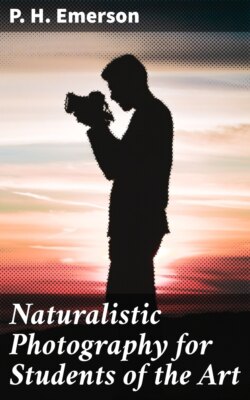Читать книгу Naturalistic Photography for Students of the Art - P. H. Emerson - Страница 16
На сайте Литреса книга снята с продажи.
Early Christian Art.
ОглавлениеEarly Christian art.
Leaving Greek art, we now come to the art of the early Christians. Woltmann and Woermann tell us that “Early Christian art does not differ in its beginnings from the art of antiquity.... The only perceptible differences are those differences of subject which betoken the fact that art has now to embody a changed order of religious ideas, and even from this point of view the classical connection is but gradually, and at first imperfectly, severed.... At the outset Christianity, as was inevitable from its Jewish origin, had no need for art. In many quarters the aversion to works of material imagery ...—the antagonism to the idolatries of antiquity—remained long unabated. Yet when Christianity, far outstepping the narrow circle of Judaism, had been taken up by classically educated Greeks and Romans, the prejudice against works of art could not continue to be general, nor could Christendom escape the craving for art which is common to civilized mankind. The dislike of images used as objects of worship did not include mere chamber decorations, and while independent sculpture found no footing in the Christian world, or at least was applied only to secular and not to religious uses, painting, on the other hand, found encouragement for purely decorative purposes, in the execution of which a characteristically Christian element began to assert itself by degrees.”
The catacombs.
The pure Christian element began to assert itself silently in decorative work in the catacombs, and “these cemeteries are the only places in which we find remains of Christian paintings of earlier date than the close of the fourth century.” These works, however, “constituted no more than a kind of picture writing,” as any one who has seen them can certify. But this symbolism got very mixed with pagan stories, and we get Orpheus in a Phrygian cap, and Hermes carrying a ram, both representing the Good Shepherd. At other times the artists seem to have set themselves to represent a Christ constructed on their knowledge of the attributes ascribed to him, and we get a beardless youth approaching “closely to the kindred types of the classical gods and heroes.” “Mary appears as a Roman matron, generally praying with uplifted hands.” |St. Peter’s statue at Rome.|Peter and Paul “appear as ancient philosophers,” and the well-known bronze statue of St. Peter, in the cathedral dedicated to him at Rome, is no less than a bonâ fide antique statue of a Roman consul. Here we have the same neglect of nature, and the bad work always to be expected from this neglect and from enslaved minds.
Mosaics.
The mosaics of Christian art were also handed down from classical antiquity. Though rarely found in the catacombs, this art was being much used above ground for architectural decoration. This art, as Woltmann and Woermann rightly say, was “only a laborious industry, which by fitting together minute coloured blocks produces a copy of a design, which design the workers are bound by. They may proceed mechanically, but not so flimsily and carelessly as the decorative painters.” From about A.D. 450 we are told that church pictures become no longer only decorative, but also instructive. Here then was a wrong use of pictorial art—it is not meant to be symbolic and allegorical, or to teach, but to interpret the poetry of nature.
A new conception of Christ it seems now appeared in the mosaics,—a bearded type,—and this time we get the features of Zeus represented. |The emperors' school.| By means of the mosaics a new impulse was given to art, and in A.D. 375 a school was founded by the Emperors Valentinian, Valens, and Gratian, of which we read, “The schools of art now once more encourage the observance of traditions; strictness of discipline and academical training were the objects kept in view; and the student was taught to work, not independently by study from nature, but according to the precedent of the best classical models.”
Byzantine art.
At this time art, though lying under the influence of antique traditions, held its own for a longer time in Byzantium, where the decorative style of the early Christians lived on after the iconoclastic schism in the eighth century, and where we read that this ornamental style began to be commonly employed. |Justinian.|After the age of Justinian (which itself has left no creation of art at Rome), many poor and conventional works were executed at Ravenna. We read that for “lack of inner life and significance, amends are attempted to be made by material splendour, brilliancy of costume, and a gold groundwork, which had now become the rule here as well as in Byzantium.” Thus we see the artists became completely lost in confusion since they had left nature, and they knew not what to do, but, like many weak painters of the present day, tried to make their work attractive by meretricious ornaments, and true art there was none. This is carried out to-day to its fullest development by many men of medium talent, who make pictures in far countries, or of popular resorts, or religious subjects, and strive to appeal, and do appeal to an uneducated class, through the subject of their work, which in itself may be a work of the poorest description.
Mosaics.
We read that in the year 640, “the superficial and unequal character of mosaic workmanship increased quickly.” |Miniatures.| The miniatures of the early Christians, however, we are told, showed considerable power, but the iconoclastic schism brought all this to an end. |Mohammedans.| “The gibes of the Mohammedans” were the cause of Leo the Third’s edict against image worship in A.D. 726. All the pictures in the East were destroyed by armed bands, and the painters thrown into prison, and so ended Byzantine art. This movement did not affect Italian art.
